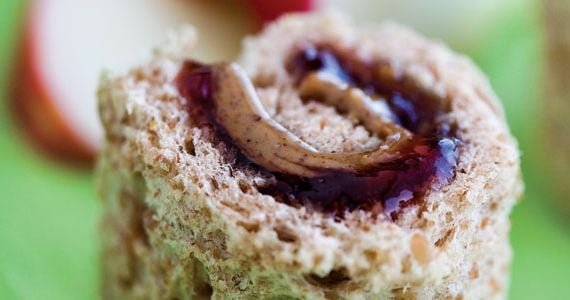Explore the Tasty Variety of Nut and Seed Spreads
Explore the delightful realm of nut and seed spreads. With peanut bans becoming commonplace in many schools, you can broaden your child’s nutritious lunch choices.
A Nostalgic Classic: The PB and J
Few creations can bring us back to our childhood quite like the timeless peanut butter and jelly sandwich. Neatly wrapped in wax paper and filled with care in a lunchbox adorned with cartoons, this sandwich was a staple for many of us growing up.
Transitioning to Peanut-Free Options
Those PB and J days may be behind us now. With a growing number of allergy alerts, finding an elementary school without at least one peanut-free classroom is increasingly rare. In fact, numerous schools across Canada are adopting completely peanut-free policies.
Thankfully, there are numerous healthy substitutes for peanut butter, including options made from a variety of tree nuts such as walnuts, hazelnuts, almonds, cashews, and pistachios; seeds such as hemp, sunflower, and pumpkin; and even soybeans.
Tree Nut Spreads
It’s essential to note that peanuts are technically legumes and not true nuts; therefore, not everyone allergic to peanuts will have a sensitivity to tree nuts, and the reverse is also true. While some schools and classes may implement a complete nut ban, others might still permit tree nuts and their spreads.
Generally, nut spreads are rich in protein and healthy monounsaturated fats. They also provide a range of vitamins and minerals, as outlined in the table below.
If your child’s school permits tree nuts, consider offering nut butter spreads, which are typically available at local health food shops. The usage suggestions for each spread can be adjusted to fit your child’s preferences while adhering to school regulations.
Tree Nut Butters
Spread Nutritional Highlights (per 2 Tbsp/30 mL serving) Enjoy it
almond – 202 calories – Cut the crust off a slice of whole grain bread (save crusts for breadcrumbs later), flatten with a rolling pin, spread with almond butter and a no-sugar-added jam, then roll it up and slice into sushi-like pieces.
- 4 g protein
- high in magnesium and manganese
- 12 g monounsaturated fat
- 2 g saturated fat
cashew – 188 calories – Spread on a whole grain tortilla, place a whole, peeled banana on top, and roll it up for a nutritious on-the-go lunch.
- 6 g protein
- high in copper and magnesium
- 9.4 g monounsaturated fat
- 4 g saturated fat
hazelnut – 180 calories – Mix with cocoa powder and a touch of organic cane sugar for a healthier homemade version of the famous chocolate hazelnut spread.
- 4 g protein
- high in vitamin E, copper, and manganese
- 14 g monounsaturated fat
- 1 g saturated fat
pistachio – 156 calories – Serve as a dip for sliced apples, pears, celery, and other fruits or vegetables.
- 6 g protein
- high in copper, manganese, vitamin B6, thiamine, and phosphorus
- 2 g saturated fat
walnut – 200 calories – Core and halve a crunchy apple; spread with nut butter and perhaps a few fair-trade chocolate chips for an extra treat.
- 5 g protein
- high in manganese, copper, magnesium, and phosphorus
- 2 g saturated fat
Seed and Soy Spreads
Spread Nutritional Highlights (per 2 Tbsp/30 mL serving) Enjoy it
tahini (sesame seed) – 172 calories – Stir into hot soup or stew for a creamy texture and added nutrition.
- 6 g protein
- high in thiamine, copper, phosphorus, and manganese
- 5.4 g monounsaturated fat
- 2 g saturated fat
sunflower seed – 186 calories – Take two slices of whole-grain bread. Spread one slice with seed butter and layer sliced strawberries, then top with the other piece of bread and cut into quarters for a delightful twist on PB and J.
- 6 g protein
- high in manganese, magnesium, copper, and phosphorus
- 3 g monounsaturated fat
- 1.6 g saturated fat
pumpkin seed – 200 calories – Spread seed butter on celery sticks and top with your child’s favorite dried fruit (like cherries, raisins, or chopped apricots) for a modern take on "ants on a log."
- 6 g protein
- high in magnesium, phosphorus, and zinc
- 10 g monounsaturated fat
- 3 g saturated fat
hempseed – 180 calories – Spread on a banana pancake with cinnamon and a drizzle of organic maple syrup, then top with another pancake to make a cold pancake "sandwich."
- 9 g protein
- high in iron
- 1.5 g monounsaturated fat
- 1 g saturated fat
soybean – 200 calories – Spread on a whole grain wrap, drizzle with honey, sprinkle with puffed rice or quinoa cereal, roll up, and slice into bite-sized pieces for a healthy after-school snack.
- 10 g protein
- high in manganese, phosphorus, magnesium, copper, folate, and vitamin K
- 2 g saturated fat
Exploring Seed and Soy Options
If your child’s classroom prohibits tree nuts, there are plenty of seed and soy spreads available at local health food stores. Seed and soy butters are excellent sources of protein and packed with essential nutrients.
In rare cases, these substitutes are also banned as they can resemble nut butters in both appearance and taste, making it hard for teachers to differentiate. If that’s the case in your child’s school, classic sandwiches with turkey, lettuce, and tomato are always a safe option. With so many fresh alternatives available, traditional peanut butter sandwiches can feel outdated. If your child’s classroom is peanut or tree nut-free, or if you’re simply looking to introduce something new, give these alternatives a try. You might be surprised to find that their new favorite spread is pistachio butter!
Reading Labels Wisely
When selecting a nut or seed butter from local health food stores, keep an eye out for the following:
-
Minimal Ingredients
A quality nut or seed butter should consist mainly of nuts and possibly nut oil, with a small addition of salt. If salt is present, be sure to check the sodium levels for reasonableness. -
Organic Certification
Due to their high fat and protein content, nuts tend to absorb pesticides. Opting for organic nut and seed butters when possible helps minimize exposure to these substances. - Fair Trade Certification
Whenever possible, choose items that bear a fair trade seal. This label ensures that nut farmers from regions such as Malawi, El Salvador, and India receive fair pay, market stability, and sometimes extra funds for community initiatives.
Making Homemade Nut or Seed Butter
Crafting your own nut or seed butter can be a fun family activity! It’s easy to make, cost-effective, and can be customized to your family’s flavor preferences. Keep these tips in mind when making your own spread:
-
Roast the nuts or seeds at 350 F (180 C) until they achieve a golden brown color. Timing can vary considerably based on the type and size, so watch them closely and stir occasionally to prevent burning.
-
Transfer the roasted nuts to a food processor and blend continuously. Scrape down the sides with a spatula when needed and continue blending until the mixture becomes creamy and smooth.
-
To achieve a creamier consistency, you can add a neutral oil if desired. Coconut oil is a great choice, lending a hint of tropical taste.
- Flavor the nut or seed butter with a pinch of sea salt, or get creative with additions like cinnamon, vanilla extract, tamari, maple syrup, cocoa powder, or honey.






